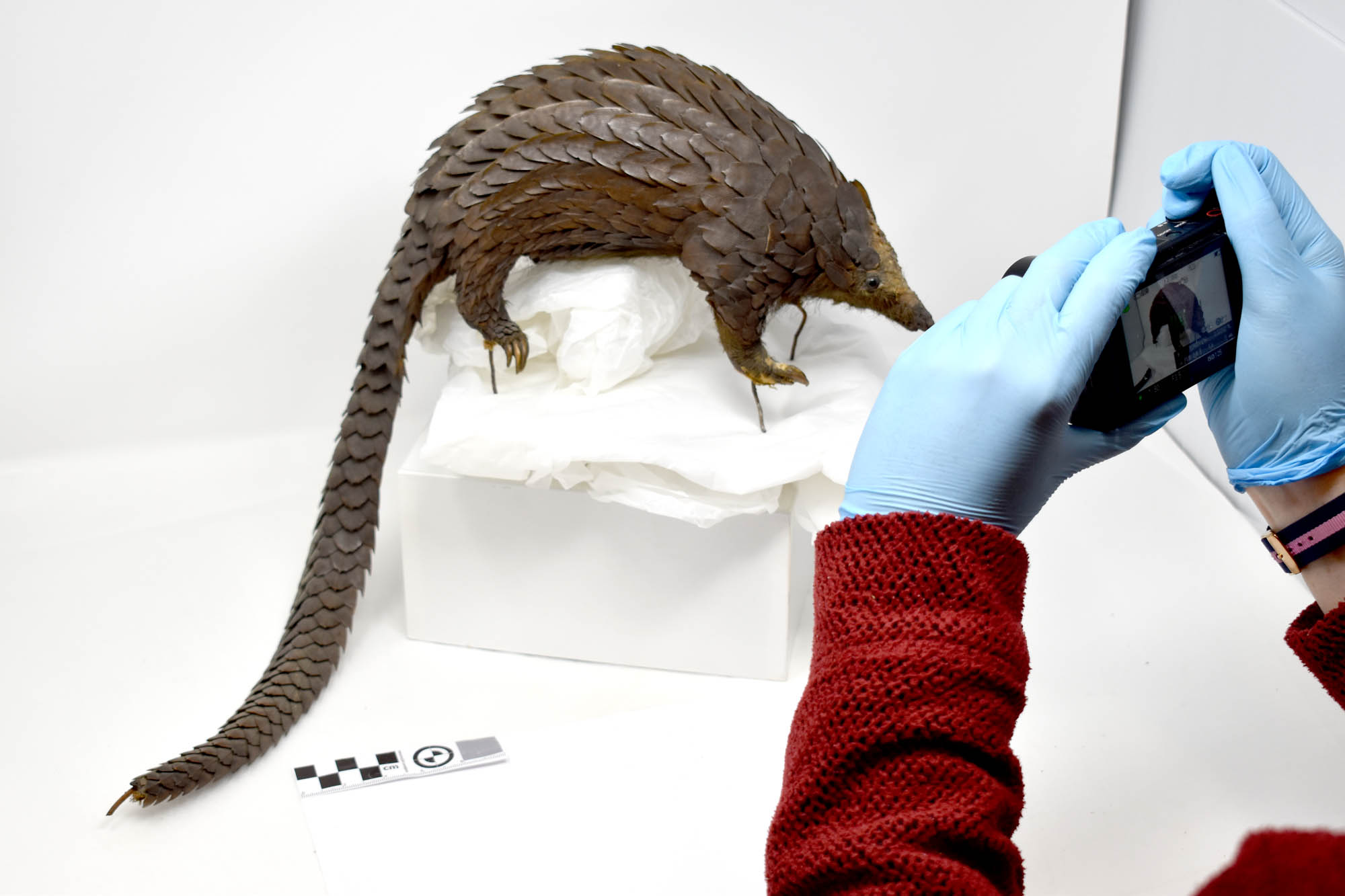Protecting Pangolins
Published: 15 April 2025
In autumn last year Leicester Museum and Art Gallery was approached by a PhD student called Ruth Lewis-Smith to help with a very important research project which aims to protect pangolins.
Help with identification
Pangolins are the most trafficked mammal in the world as their scales are used in traditional medicines; however, prosecutions of pangolin traffickers are low due to a lack of tools to identify the species and origin of seized scales. Ruth hopes to change this. Working in conjunction with the Scottish Universities Environmental Research Centre, the aim of Ruth’s project is to use pangolin scales gathered from museum specimens around the UK in order to develop a ‘multi-isotope provenancing map with which it will be possible to determine the location from where specific confiscated scales were poached’. Stable Isotope Analysis has previously been used with great success to provenance elephant ivory.

Thanks to Ruth’s project we have also been able to identify the species of our pangolin specimen which joined the museum’s collection in 1993. There are eight known species of pangolin, four of which reside in Asia and four of which reside in Africa. Leicester’s specimen was previously thought to be an Asian species; however, we now know that it is the White Bellied Tree Pangolin (Phataginus tricuspis) which is native to equatorial Africa.
Critically endangered
Pangolins are the only mammal with scales and their scales are made of keratin, which is the same material as our nails and hair. They are predominantly nocturnal, solitary creatures and they live off ants and termites which they catch with their very long, sticky tongues. When threatened pangolins roll into a protective ball and their name comes from the Malay word for roller, ‘penggulung’. Due to loss of habitat and mass trafficking every pangolin species is considered either ‘Vulnerable’ or ‘Critically Endangered’. Thanks to Ruth’s work, the scale provided from our taxidermied pangolin will play a part in protecting the future of these fascinating animals.
